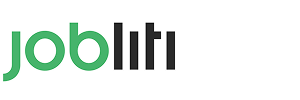Job Quiz: A Practical, Research-Backed Guide to Choosing Careers and Acing Assessments

Take Job Test Based on Your Personality
Start the TestWhy Does It Matter for Modern Job Seekers
Hiring and career exploration have evolved into data-informed journeys where smart assessments offer clarity, confidence, and direction. Instead of browsing random roles, candidates now use structured questions, realistic task simulations, and feedback dashboards to discover strengths and align with roles. This approach reduces guesswork and accelerates decisions for graduates, switchers, and returners to the workforce.
Beyond simple curiosity, a well-built tool maps competencies such as reasoning, communication, and situational judgment to role demands across industries. In this context, the disciplined structure of a job test quiz helps translate self-knowledge into practical steps toward interviews, portfolios, and targeted applications. The result is a smoother path where energy is focused on roles that fit rather than scattered across mismatched listings.
These assessments also encourage reflection about values, collaboration style, and work environments. By surfacing preferences and quantifying skills, candidates can compare career paths using an approachable framework. When exploration is guided by analytics rather than hunches, a thoughtfully designed job ideas quiz can illuminate overlooked paths and refine your shortlist with surprising precision.
- Clarifies fit using skills, interests, and real-world scenarios.
- Accelerates targeted applications and portfolio building.
- Reduces burnout from unfocused job searches.
- Improves interview performance through self-awareness.
Core Components, Question Types, and Scoring Frameworks
Quality assessments blend psychometrics with practical exercises to evaluate more than buzzwords. You’ll often encounter timed logic items, reading passages, data interpretation, and scenario-based prompts that mirror day-to-day responsibilities. This mix prevents overreliance on memorization and reveals how you think under pressure, collaborate with stakeholders, and prioritize trade-offs.
Access models vary, with some platforms providing open trials, while others bundle diagnostics with coaching or portfolios. To explore options without commitment, candidates often start with a free job test quiz that previews formats, pacing, and scoring logic. From there, upgrading to a deeper diagnostic can provide richer analytics and tailored development plans that guide practice sessions efficiently.
Scoring transforms raw responses into profiles that map to competencies and job families. Rather than a single score, great systems highlight subscales such as numerical reasoning, verbal clarity, empathy, and adaptive planning. When selection criteria are transparent, a well-explained job suitability quiz can show how your strengths cluster, where to upskill, and which roles merit immediate applications.
| Question Type | What It Measures | How to Practice |
|---|---|---|
| Situational Judgment | Workplace decisions, prioritization, stakeholder savvy | Study role scenarios, reflect on outcomes, review feedback |
| Data Interpretation | Quantitative reasoning, pattern recognition, accuracy | Timed drills with charts, spreadsheets, and case snippets |
| Verbal Analysis | Reading comprehension, synthesis, tone awareness | Summarize complex articles and compare competing claims |
| Personality Measures | Work style, collaboration, motivation, stress responses | Journal reflections and peer feedback for behavior alignment |
- Expect mixed formats and adaptive difficulty.
- Focus on accuracy first, speed second, then both together.
- Use error logs to find patterns in mistakes and close gaps.
Preparation Strategies and Practice Routines That Actually Work
Preparation is most effective when it balances targeted drills with realistic mock sessions. Start with a baseline to benchmark your current performance, then allocate time for high-yield weaknesses. Consistency matters more than marathon sessions, so design short sprints that build stamina and reduce anxiety.
After an initial diagnostic, learners often compare formats, pacing, and difficulty to pick the right practice flow. For quick self-checks and motivation boosts, some candidates prefer the approachable style of a job me quiz because it encourages incremental wins while still teaching important question patterns. Over time, stack these small gains into more demanding timed sets to simulate real testing pressure.
As confidence builds, deepen your routines by layering scenario prompts with reflection notes. When cost is a concern, candidates can still benefit from curated resources, and many discover momentum with a best job me quiz free that includes guided explanations and mini scorecards. The combination of feedback loops, warm-ups, and cooldown reviews ensures you convert lessons into durable habits that stick.
- Warm up with five-minute drills to activate focus.
- Document misses with brief “why” notes to prevent repeats.
- Rotate formats to avoid plateauing on familiar items.
- Simulate real conditions weekly with timed mock sets.
Interpreting Results and Turning Insights Into Action
Scores mean little without translation into a concrete plan. Look beyond totals to subscale patterns, and map those patterns to role expectations. For instance, strong verbal synthesis paired with moderate quantitative reasoning might favor communications or strategy roles with supportive analytics teams.
If you’re matching pathways, a clear way to align strengths with real roles is to analyze the feedback you receive from a which job should i have quiz and then cross-reference those recommendations with job descriptions. Comparing competencies to day-to-day tasks transforms abstract numbers into tangible steps, such as targeting specific industries or company sizes.
Behavioral indicators matter too, especially when collaborating, dealing with ambiguity, or managing deadlines. In many cases, reports that summarize tendencies across teams can be as valuable as skills data, and that’s where a thoughtful personality quiz jobs approach helps you spot environments where you’ll thrive. The ultimate goal is translating insights into targeted learning, curated applications, and confident interviews.
- Convert subscale gaps into weekly micro-goals.
- Link strengths to role examples to refine your shortlist.
- Use insights to craft specific, memorable interview stories.
Common Mistakes to Avoid and Pro Tips for Better Outcomes
Many candidates treat assessments like pop quizzes instead of strategic projects. Without a plan, it’s easy to overpractice comfortable items, ignore timing, and skip reflection. A balanced approach includes deliberate rest, environment control, and structured review to keep improvements compounding week over week.
Motivation can slip if progress feels abstract, so tie each study block to a visible milestone or role target. To keep focus sharp while exploring career paths, some learners use the gentle structure of a best job you quiz to translate preferences into a narrowed pipeline of roles. This framing reduces decision fatigue and anchors preparation to concrete outcomes rather than vague aspirations.
Another pitfall occurs when expectations are mismatched with actual role demands. Before committing to applications, calibrate your understanding of role scope, growth paths, and compensation bands, because a realistic quiz job opportunities expectations perspective protects morale and helps you negotiate from a position of knowledge. Clarity here prevents late-stage surprises and keeps your search sustainable.
- Schedule rest to prevent cognitive fatigue before critical attempts.
- Practice in the same environment where you’ll test, when possible.
- Track trends, not isolated scores, to see true progress.
FAQ: Practical Answers for Candidates and Career Changers
How accurate are these assessments for real hiring scenarios?
They’re most accurate when they combine multiple measures such as cognitive, behavioral, and situational items, and when results are interpreted alongside job descriptions and portfolio evidence. Accuracy also improves when you practice with mixed formats and review detailed feedback rather than only tracking totals. Over time, alignment emerges between test patterns and everyday performance on the job.
How should I start if I have limited time to prepare?
Begin with a brief baseline to locate your biggest gaps, then rotate short, focused drills across those weak areas. After a few sessions, schedule a weekly mock under timed conditions to mimic stress and refine pacing. If you need a quick orientation and low-friction entry point, you might add a concise find job you quiz to warm up before tackling deeper practice sets.
Do personality measures really help with role fit?
They help when used responsibly, especially in combination with skills data and realistic scenarios. Personality signals can illuminate preferred environments, collaboration styles, and stress responses, which influence satisfaction and retention. The key is treating these insights as guides, not rigid labels.
What’s the best way to review mistakes without feeling overwhelmed?
Create a simple error log grouped by pattern, such as misreading data or rushing final choices. For each entry, note the cause, the fix, and a short example that cements the lesson for next time. Many learners also benefit from occasional calibration using a targeted job survey quiz, free to validate whether improvements are sticking across formats.
How do I use results to improve interviews and applications?
Translate high-scoring areas into achievement bullets with measurable impact, and craft stories that link challenges, actions, and results. For weaker areas, demonstrate progress with concrete practice routines and recent outcomes. This turns reports into compelling narratives that hiring teams can trust.
